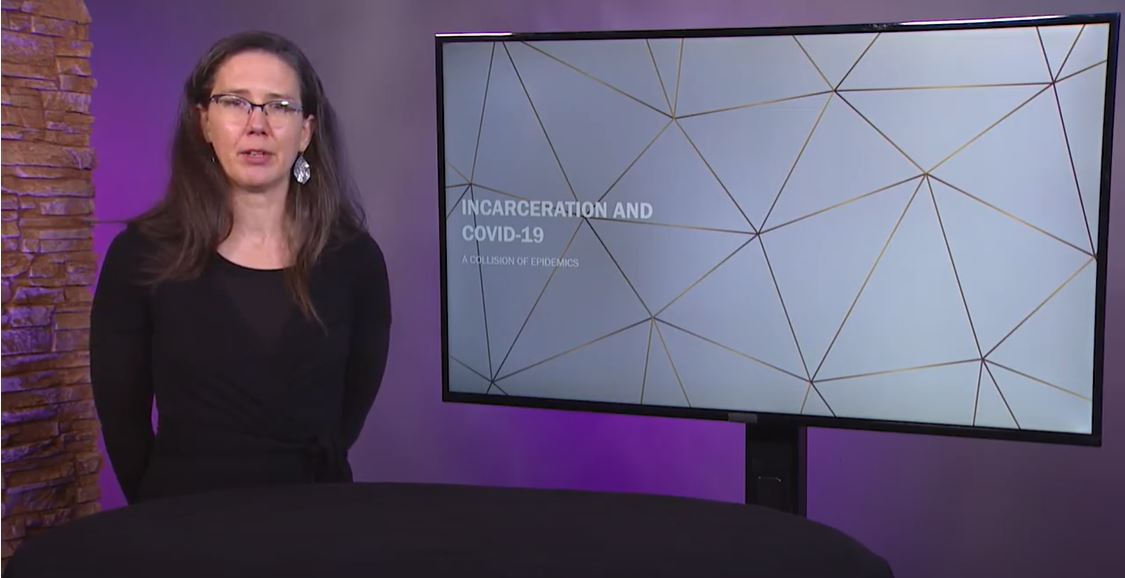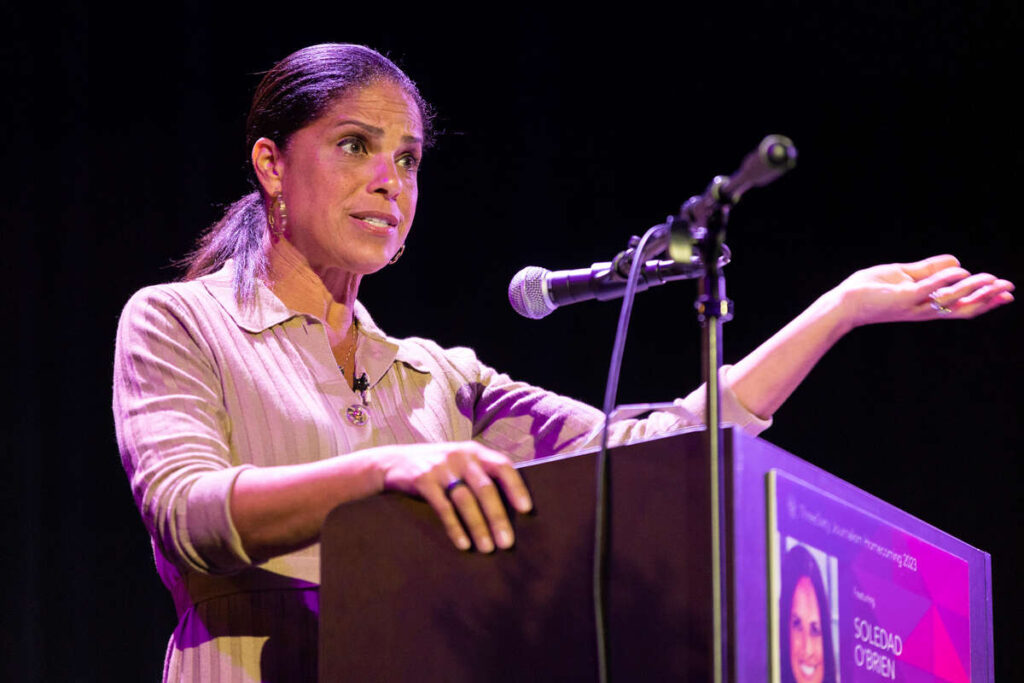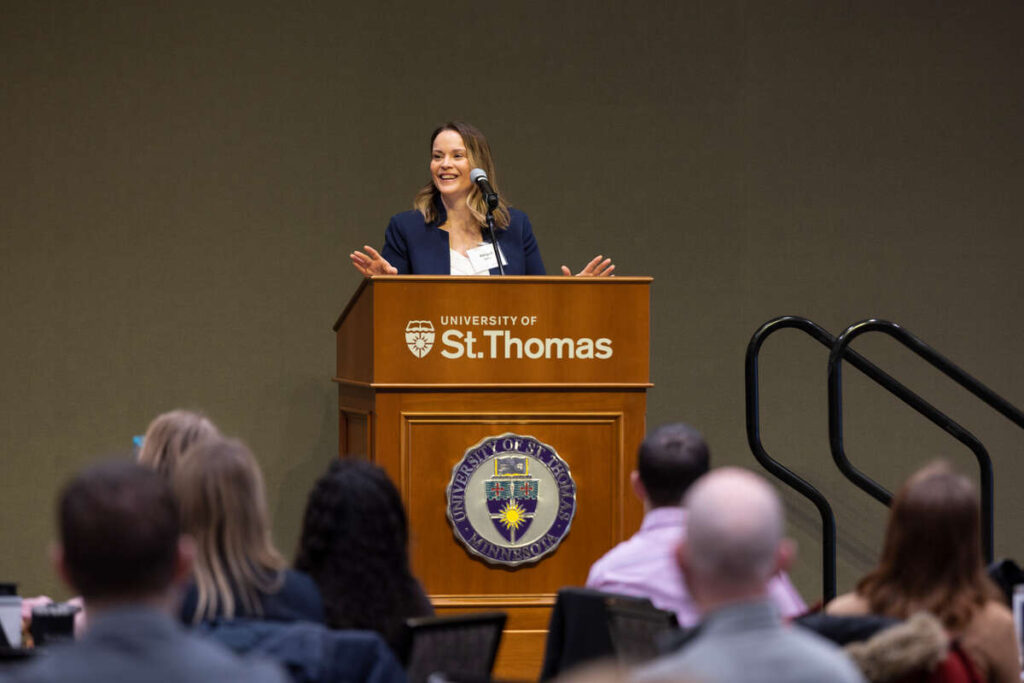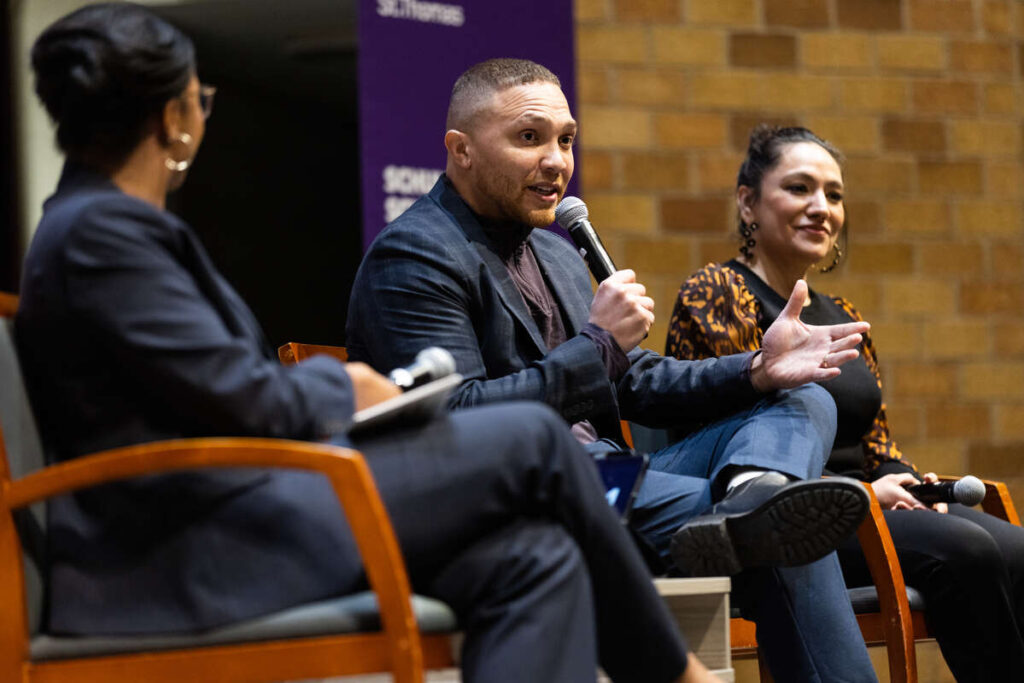The U.S. leads the world in two categories: COVID-19 cases and incarceration. As we experience the collision of two pandemics – coronavirus and mass incarceration – theology professor Amy Levad says the results are disastrous.
As part of the College of Arts and Sciences Teach-in Tuesday series, Levad offered her expertise as a Christian moral theologian who has studied the social ethics of criminal justice and mass incarceration. During the pandemic, the people in jails and prisons are going without many of the public safety resources we take for granted: social distancing, masks, even access to soap and water or hand sanitizer. Understanding the grim realities they face, Levad said, can help us all understand why we should reduce the number of people who are incarcerated
Here are five observations from Levad’s virtual talk and interdisciplinary commentary from Dr. Roberto Aspholm, a faculty member in the School of Social Work and Morrison Family College of Health, and Dr. Jessica Hodge, a faculty member in the Justice and Society Studies Department.
- Our fates are bound together. The well-being and health of all of us depends on the well-being and health of people in jails and prisons.
Jails and prisons are designed to separate “us” from “them,” but it’s a mistake to equate a physical barrier to public safety, Levad said.
"In principle, we ought to be concerned about transmission of coronavirus in prisons and jails, because the people housed in them are human persons bearing inalienable dignity," Levad said. "We ought also to be concerned because coronavirus spread in prisons and jails will inevitably lead to coronavirus spread outside these facilities, because of the porous boundary between prisons and jails in the wider community."
In both urban and rural areas, if an area had more incarcerated people, the area also saw more virus transmission, Levad said. And reports indicate that on a national level, mass incarceration added more than a half million COVID-19 cases among people outside.
- Without immediate action, more people both inside and outside of prisons and jails will die unnecessarily.
Admitting fewer people and releasing elderly, high-risk or people near the end of their sentences, Levad said, could reduce incarcerated populations and thus lower the health risk. In addition, a move to releasing those who have not yet been convicted of a crime would account for nearly half a million people nationally.
Levad also advocated for community support like housing and medical care to be included in COVID-19 relief bills and that those in carceral settings be given access to basic resources to protect themselves: masks, water, soap and hand sanitizer as well as be among the first to receive a vaccine.
A plan like this, Levad said, has been controversial among those who believe releasing people who are incarcerated would threaten public safety.
"It's important to remember that mass incarceration came about not because of high crime rates; furthermore, mass incarceration largely does not stem crime in our communities," Levad said. "Mass incarceration itself is a threat to public safety and has always been a threat to public safety. Many of us just couldn't see it as clearly before this pandemic."
- COVID-19 exposed and widened social injustices.
The COVID-19 pandemic and response to it have laid bare and exacerbated structural injustices and the weaknesses of many of our systems and institutions, said Levad. Those most at risk for COVID-19, she said, are the least likely to have access to the resources they need to protect themselves, including those who are “hidden away” in carceral settings.
“The problems in our nation's prisons and jails may not be so readily apparent as those in families, schools, health care systems and other institutions,” Levad said. “However, it's not that these problems didn't exist before COVID-19, it's that they are so obvious now with the new level of security introduced by the threat of a deadly virus.”
In his interdisciplinary commentary, Aspholm said, “the response or lack thereof from policymakers turned an inevitably bad situation into a catastrophic one.”
“We should be attuned to the fact that our anemic response to the pandemic was exacerbated by a number of broader, longer-standing factors including our fragmented, market-oriented health care system, our meager welfare state and the decadeslong gutting of our public health sector.”
Aspholm said our public institutions have failed to ensure the basic well-being of all members of our society.
- All of us have a criminal history, only some have a criminal record.
The human reality, Levad said, starts with the recognition that every human being bears the image of God. She also said that all humans mess up. While one in four Americans has a criminal record, four of four have a criminal history.
"We have all violated one law or another, but only some pay the consequences, with time in jail or prison. We often make a ‘them’ out of people in prison, based on an unmerited sense of moral superiority," Levad said. "While acknowledging our own fallibility, we must also see that people in prison and jail are more than the worst thing they have ever done."
Hodge provided an interdisciplinary response. “The most glaring example of injustice within our criminal justice system is the disproportionate impact of mass incarceration on communities of color in this country,” she said.
“Black, Indigenous and people of color are more likely than white people to be arrested and charged for crimes, and they are also more likely to be convicted and sentenced to prison, even for similar types of crimes to those who have similar criminal histories,” Hodge said. “This racial injustice is well documented in criminological research.”
- Mass incarceration in the United States is unprecedented.
Levad defined mass incarceration as a condition of U.S. society in the late 20th and early 21st century in which "we lock up a vast population in our jails and prisons, as well as place large numbers of people under penal supervision through probation and parole."
“Our rates of incarceration and numbers of people caught up in criminal justice systems are unprecedented historically and unique internationally,” she added. “Although we have about 5% of the global population in the United States, we hold about a quarter of the world's [incarcerated] population.”
Levad pointed out that the United States currently has more than 2.2 million people in jails and prisons, with another 4.5 million people on probation and parole. On any given day, there are about 630,000 people in jail. That impact goes far beyond the person who is incarcerated.
“All of the people in prisons and jails have connections to people outside,” Levad said. “Roughly a third of the U.S. population has had an immediate family member: parent, sibling or child in prison or jail.”
View this presentation’s reading list online.
The next event in this series will explore street art and protest in the aftermath of George Floyd's death and is scheduled for noon on April 20.







